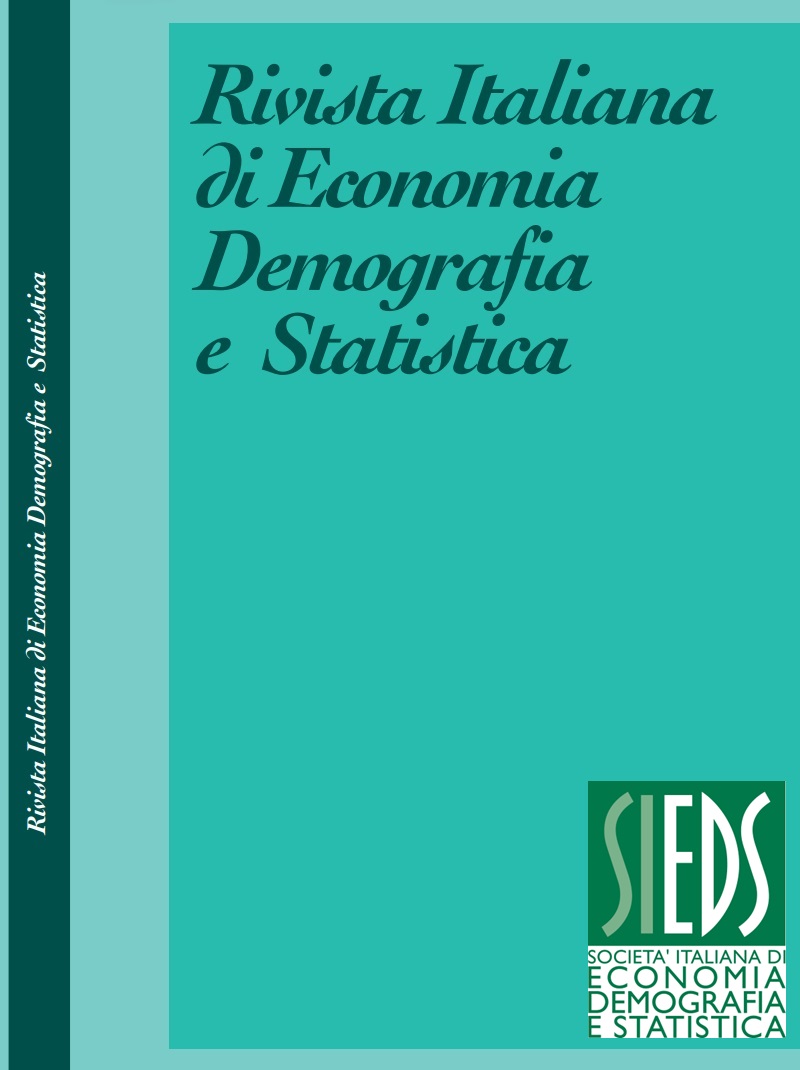Territorial inequalities between digital innovation and the labour market
DOI:
https://doi.org/10.71014/sieds.v79i2.322Keywords:
skills, digitalization, labour market, territorial inequalities, enterprises, workforceAbstract
Digitalisation has redefined the strategic choices of companies and the skills required by the labour market. In Italy, digital innovation continues to suffer from significant shortcomings, which are accentuated in specific territories. On this basis, the present study aims to contribute by analysing the relationship between the digital innovation of businesses and the digital skills of workers from a complementary perspective, with the ultimate objective of outlining the digital profile of the Italian regions. The analysis begins with the selection of labour market digitalisation indicators on the demand and supply side, processed by ISTAT and Unioncamere's Excelsior Information System. The relationship between the digital innovation of enterprises and the digital skills of workers is analysed through three composite indices to capture the degree of digitalisation of enterprises, the skill level of the workforce and the expected demand for digital skills in the labour market. The synthesis methodology used here is the Mazziotta-Pareto Index (MPI). The findings indicate significant regional differences in the digitalisation paths of firms and the workforce.
References
BENECCHI A., BOTTONI C., CIAPANNA E., FRIGO A., MILAN A., SCARINZI E. 2021. Digitalisation in Italy: evidence from a new regional index. Questioni di Economia e Finanza (Occasional Papers), No. 662, Banca d'Italia Eurosistema. DOI: https://doi.org/10.2139/ssrn.4016669
BRUNO G., DIGLIO A., PICCOLO C., PIPICELLI E. 2023. A reduced Composite Indicator for Digital Divide measurement at the regional level: An application to the Digital Economy and Society Index (DESI), Technological Forecasting and Social Change, Vol. 190, No.122461, pp. 1-16. DOI: https://doi.org/10.1016/j.techfore.2023.122461
EUROPEAN COMMISSION. 2024. 2030 Digital Decade - Report on the state of the Digital Decade 2023. Luxembourg: Publications Office of the European Union.
GIANNINI V., IACOBUCCI D., PERUGINI F. 2022. I divari regionali nella digitalizzazione. In CORÒ G., DE CASTRIS M. and SCALERA D. (Eds.) PNRR Italia - Il difficile equilibrio tra i territori, Roma: Donzelli Editore.
ISTAT. 2023a. Cittadini e Ict, anno 2023. Statistica Report, ISTAT.
ISTAT. 2023b. Imprese e Ict, anno 2023. Statistica Report, ISTAT.
LORRAINE C., SHUTING X., COUTTS A.P. 2022. Digitalization and Employment - A Review. Geneva: Publications of the ILO.
MAZZIOTTA M., PARETO A. 2020. Gli indici sintetici. Torino: Giappichelli.
OECD. 2023. OECD Skills Outlook 2023: Skills for a Resilient Green and Digital Transition. Paris: OECD.
OECD. 2019. OECD Employment Outlook 2019: The Future of Work. Paris: OECD
OECD. 2008. Handbook on constructing composite indicators. Methodology and user guide. Paris: OECD.
SEMENZA R. 2022. Manuale di Sociologia del lavoro. Torino: Utet Editore.
SISTEMA INFORMATIVO EXCELSIOR. 2020. Impatti dell’emergenza COVID-19 sulle imprese e prospettive di ripresa rilevati attraverso il sistema informativo Excelsior. Roma: Unioncamere e ANPAL.
SISTEMA INFORMATIVO EXCELSIOR. 2024. Previsioni dei fabbisogni occupazionali e professionali in Italia a medio termine (2024-2028). Roma: Unioncamere e ANPAL.
SISTEMA INFORMATIVO EXCELSIOR. 2023. Le competenze digitali. Analisi della domanda di competenze digitali nelle imprese, indagine 2023. Roma: Unioncamere e ANPAL.
Downloads
Published
Issue
Section
License
Copyright (c) 2025 Francesca Carta, Ilaria Straccamore

This work is licensed under a Creative Commons Attribution 4.0 International License.



